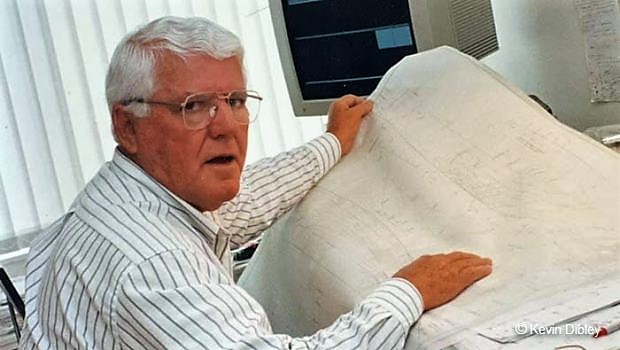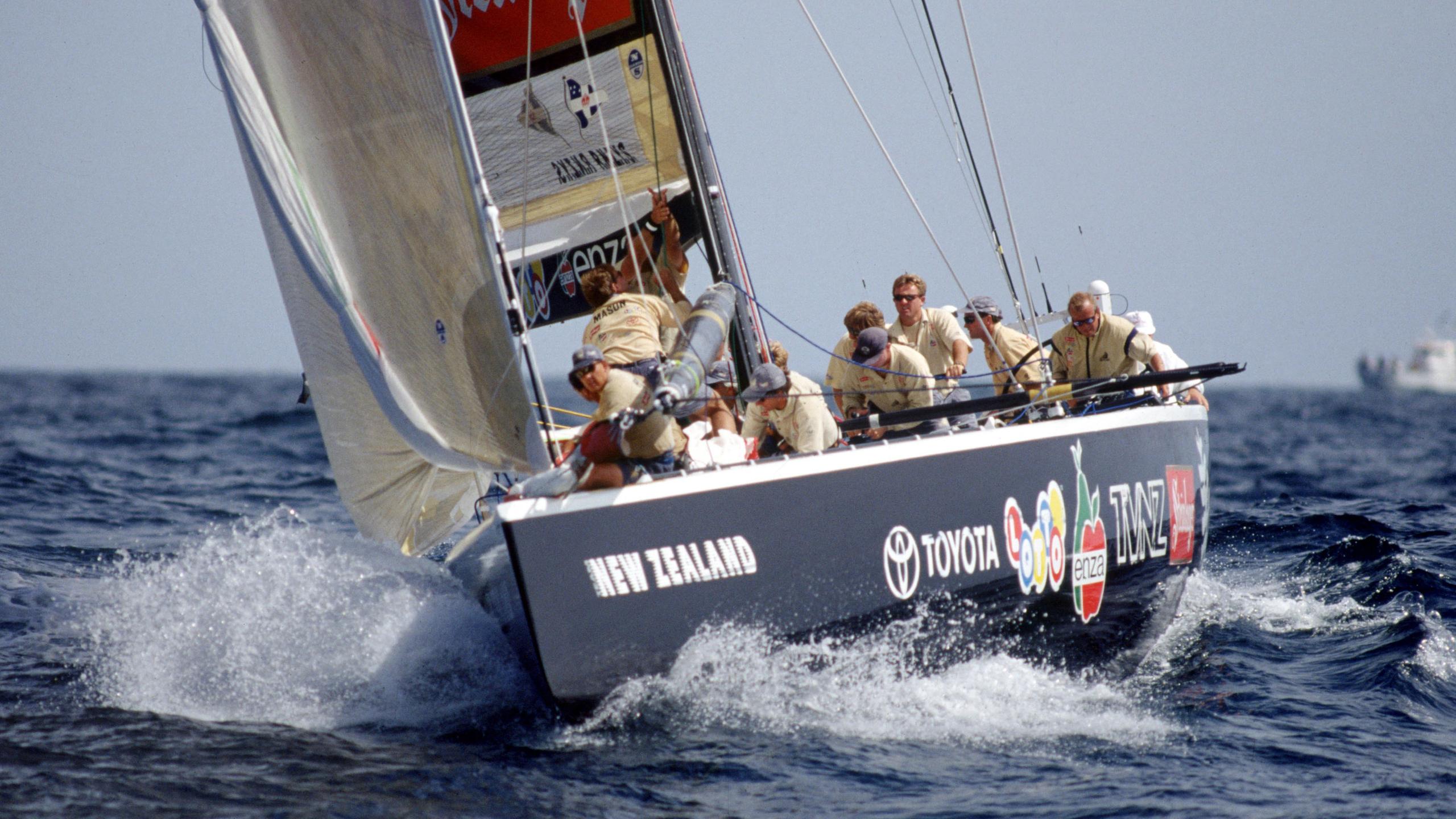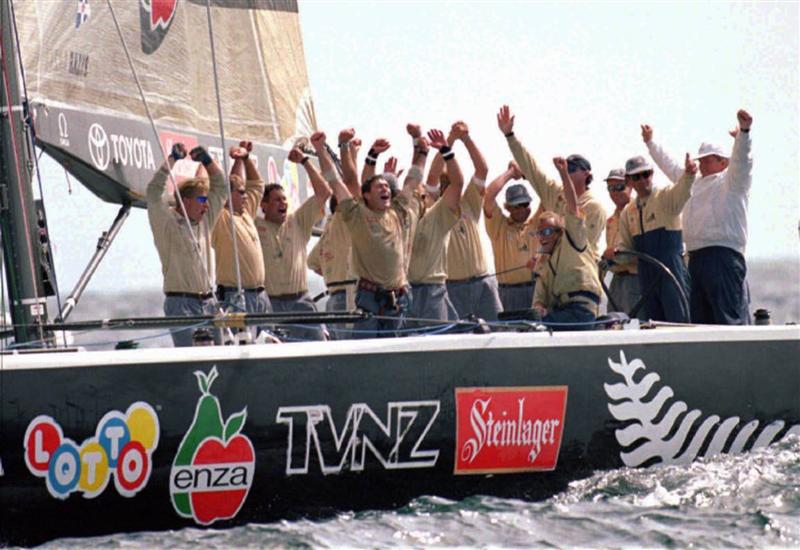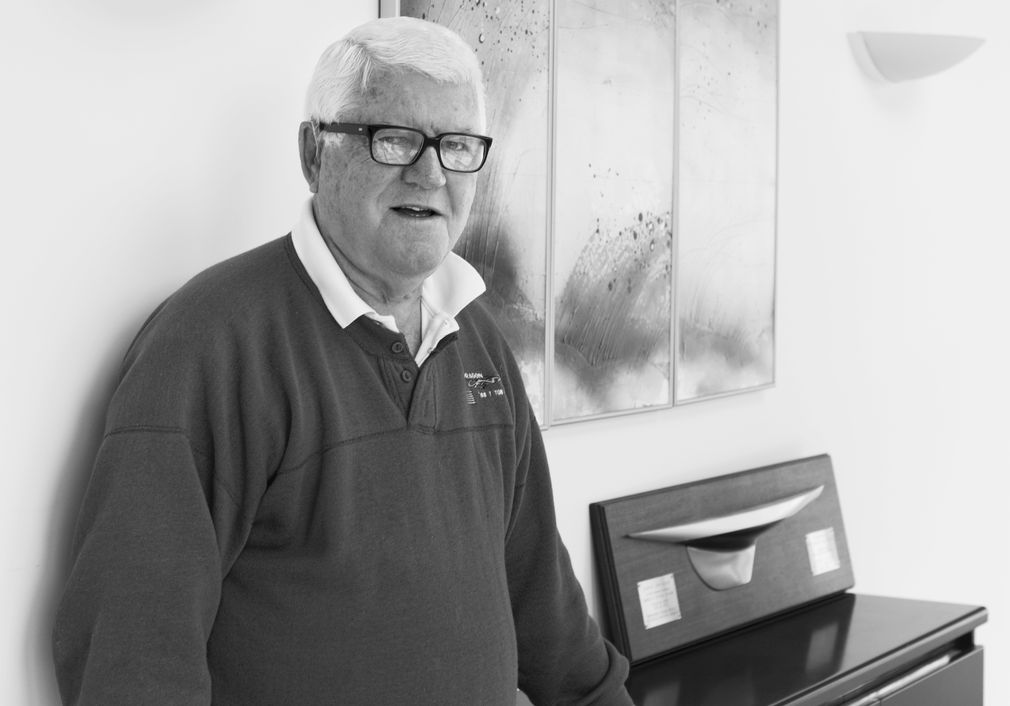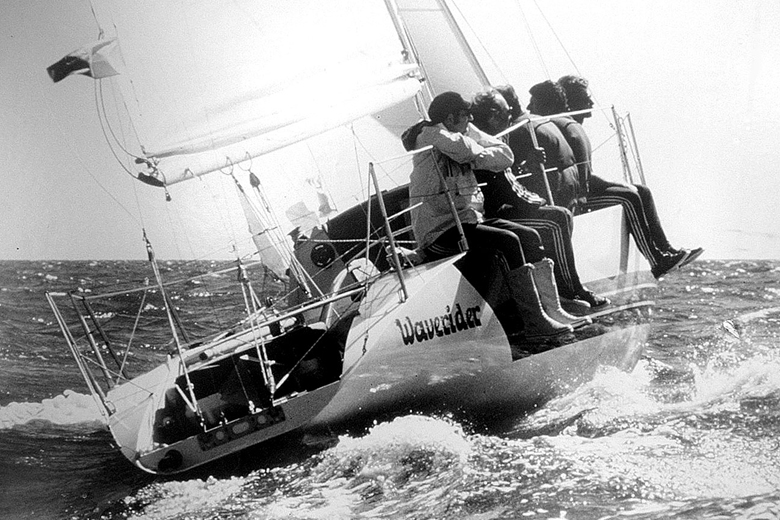8 bells, Laurie Davidson
Tributes are flowing for one of New Zealand’s most successful yacht designers, Laurie Davidson.
06 October 2021
Advertisement
In an illustrious yacht designing career stretching well over half-a-century Laurie Davidson drew many fast boats but is probably best known for his winning America’s Cup designs in 1995 and 2000.
The so-called “Davidson bow” is credited with being the point-of-difference in Team New Zealand’s successful Cup defence in 2000, much like 2017’s cyclors or Ben Lexcen’s winged keel which tipped the balance for Australia II in 1983.
Davidson’s output and influence across the sailing spectrum was profound – from dinghies to three-quarter and one-ton world champions, to attractive well-performing cruisers, to Sydney to Hobart winners and round-the-word racers. In the hands of a good crew his boats were never far from the podium. VOR 60 Djuice Dragons was one of his, as well as the 28, 32 & 36 Cavaliers and the Dash 34.
Advertisement
Among his first creations in 1947, the M Class boat, Myth, re-defined the class of big, unballasted, centre-board dinghies that are still sailed today by a fiercely loyal following mainly out of the Royal Arkarna Yacht Club in Auckland.
In a sense numbers and formulae were always part of Davidson’s life.
After leaving school he qualified as an accountant and worked in that profession until in 1969 he joined Morely Sutherland’s local boat building company at Greenhithe. In 1970 a well-known Auckland sailor Tony Bouzaid commissioned Blitzkrieg a half-ton yacht designed by Davidson. Davidson captained it to win the inaugural New Zealand Half Ton Championship.
Encouraged by this success Davidson bought an Olivetti computer and with software sourced from Sparkman and Stephens and began using the computer to design yachts.
Then followed an extraordinary run of international success, starting in 1976, with the half-tonner Waverider, which won the World Championship in 1978 and 1979, and the first Pendragon, a sensation at the time, winning the Three-Quarter Ton cup in 1978, and then going on to win the One Ton Cup in 1979, a feat not achieved by any other yacht in level rating competition.
Pendragon was commissioned by US dinghy sailor and Californian John MacLaurin who gloriously campaigned a series of Pendragons. In 1999 Davidson’s Pendragon IV was so dominant, that she was used as the base for the then new TP52 Rule. The TP Class is now the preeminent inshore and offshore monohull racing class.
Through the 70s he was responsible for the Cavalier class and the Davidson 28, a well-loved staple of many yachting families around the world.
In the 80s Kiwis were dominating international yachting design and Davidson’s boats scooped their fair share of honours in the big races. In 1986 Ex Tension won the Sydney to Hobart overall in a competitive fleet of 123 yachts then just two years later another Davidson design Illusion triumphed again.
By 1987 Davidson was a key member of the Team New Zealand design group, collaborating with other highly successful designers such as Bruce Farr and Ron Holland on the New Zealand fibreglass 12-Metre boats (colloquially known as plastic fantastics), that were among the top performers during the 1987 World Cup competition off Fremantle.
In 1995, he went one better designing with Doug Petersen Black Magic (NZL 32) which trounced the defender Young America 5–0 off San Diego.
In 2000, when Laurie was chief designer of Team New Zealand, designers of competing syndicates used the hull shape of NZL 32 as the benchmark. But Laurie took a jump ahead by what is now known as the “Davidson bow”, which featured two distinct turns on the underside of the bow profile and then a vertical or near vertical stem.
Again a Davidson-designed boat won in five straight, this time against the challenger LUNA ROSSA of Italy. Later he collaborated with Bruce Nelson and Phil Kaiko in the design of the two boats of the One World Challenge team.
For 13 years Davidson was at the forefront of a golden era of New Zealand’s America’s Cup history.
In a post to social media, 36th America’s Cup winners Team New Zealand said they were sad to hear of the legendary designer’s passing.
“Laurie was also one of ‘The Big 3’ (Laurie Davidson, Bruce Farr and Ron Holland) that came out of NZ and dominated international yacht design through the 70s, 80s & 90s.
“Laurie’s influence in yacht design will be a legacy within the sport for years to come.”
At 90, Laurie Davidson retired from the pinnacle of sailing competition but kept abreast of the quantum leaps which have taken the boats from keels onto foils.
From his Long Bay home that overlooked the Haruki Gulf he remained connected to all aspects of sailing and keenly followed the development of the AC 75’s.
Davidson’s world-beating Black Magic designs set the bar for innovation at the time but after the foiling catamarans in Bermuda in 2017, they were consigned to museum pieces, albeit highly refined ones.
“My specialty was designing a shape which would go through the water with the least resistance; these things [the AC50 catamarans] don’t even touch the water. It’s not yacht design as I knew it, but you’ve got to be impressed by what they do and the way the crew handled the hydrofoils, ” he recounted in an interview with the NZ Herald in 2017.
In the 2000 New Year Honours, Davidson was appointed a Companion of the New Zealand Order of Merit, for services to yacht designing.
He was inducted into the America’s Cup Hall of Fame in 2007 and is now regarded as one of the best America’s Cup designers since the introduction of the new American’s Cup class in 1990.
If that wasn’t enough there is also his legacy of designing keel yachts of an international standard which helped to establish New Zealand’s boat building industry and enviable reputation in international yacht racing circles.
Laurie Davidson was 94.
Fair winds, Laurie.
Advertisement
Advertisement
Advertisement


